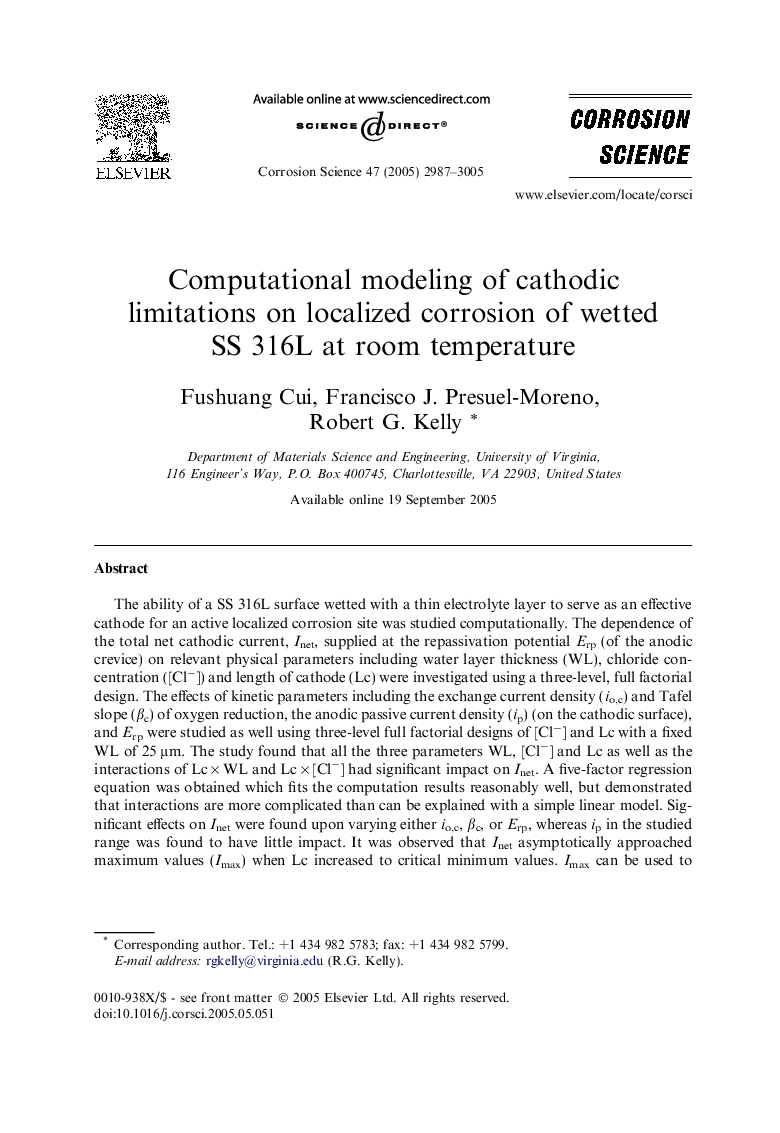| Article ID | Journal | Published Year | Pages | File Type |
|---|---|---|---|---|
| 1472438 | Corrosion Science | 2005 | 19 Pages |
The ability of a SS 316L surface wetted with a thin electrolyte layer to serve as an effective cathode for an active localized corrosion site was studied computationally. The dependence of the total net cathodic current, Inet, supplied at the repassivation potential Erp (of the anodic crevice) on relevant physical parameters including water layer thickness (WL), chloride concentration ([Cl−]) and length of cathode (Lc) were investigated using a three-level, full factorial design. The effects of kinetic parameters including the exchange current density (io,c) and Tafel slope (βc) of oxygen reduction, the anodic passive current density (ip) (on the cathodic surface), and Erp were studied as well using three-level full factorial designs of [Cl−] and Lc with a fixed WL of 25 μm. The study found that all the three parameters WL, [Cl−] and Lc as well as the interactions of Lc × WL and Lc × [Cl−] had significant impact on Inet. A five-factor regression equation was obtained which fits the computation results reasonably well, but demonstrated that interactions are more complicated than can be explained with a simple linear model. Significant effects on Inet were found upon varying either io,c, βc, or Erp, whereas ip in the studied range was found to have little impact. It was observed that Inet asymptotically approached maximum values (Imax) when Lc increased to critical minimum values. Imax can be used to determine the stability of coupled localized corrosion and the critical Lc provides important information for experimental design and corrosion protection.
